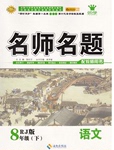题目内容
【题目】阅读理解。
El Nifio, a Spanish term for “the Christ child”, was named by South American fisherman who noticed that the global weather pattern, which happens every two to seven years, reduced the amount of fishes caught around Christmas. El Nifio sees warm water, collected over several years in the western Pacific, flow back eastwards when winds that normally blow westwards weaken, or sometimes the other way round.
The weather effects both good and bad, are felt in many places. Rich countries gain more from powerful Nifio, on balance, than they lose. A study found that a strong Nifio in 1997 helped American’s economy grow by 15 billion, partly because of better agricultural harvest, farmers in the Midwest gained from extra rain. The total rise in agricultural in rich countries in growth than the fall in poor ones.
But in Indonesia extremely dry forests are in flames. A multi-year drought (干旱)in south-east Brazil is becoming worse. Though heavy rains brought about by El Nino may relieve the drought in California, they are likely to cause surface flooding and other disasters.
The most recent powerful Nino, in 1997-98, killed around 21,000 people and caused damage worth $36 billion around the globe. But such Ninos come with months of warning, and so much is known about how they happen that governments can prepare. According to the Overseas Development Institute (ODI), however, just 12% of disaster-relief funding in the past two decades has gone on reducing risks in advance, rather than recovery and rebuilding afterwards. This is despite evidence that a dollar spent on risk-reduction saves at least two on reconstruction.
Simple improvements to infrastructure (基础设施)can reduce the spread of disease. Better sewers (下水道)make it less likely that heavy rain is followed by an outbreak of the disease of bad stomach. Stronger bridges mean villages are less likely to be left without food and medicine after floods. According to a paper in 2011 by Mr Hsiang and co-authors, civil conflict is related to El Nino’s harmful effects—and the poorer the country, the stronger the link. Though the relationship may not be causal, helping divided communities to prepare for disasters would at least reduce the risk that those disasters are followed by killing and wounding people. Since the poorest are least likely to make up for their losses from disasters linked to El Nino, reducing their losses needs to be the priority.
【1】What can we learn about El Nino in Paragraph 1?
A.It is named after a South American fisherman.
B.It takes place almost every year all over the world.
C.It forces fishermen to stop catching fish around Christmas.
D.It sees the changes of water flow direction in the ocean.
【2】What may El Ninos bring about to the countries affected?
A.Agricultural harvests in rich countries fall.
B.Droughts become more harmful than floods.
C.Rich countries’ gains are greater than their losses.
D.Poor countries suffer less from droughts economically.
【3】The data provided by ODI in Paragraph 4 suggest that_________.
A.more investment should go to risk reduction
B. governments of poor countries need more aid
C. victims of El Nino deserve more compensation
D. recovery and reconstruction should come first
【4】What is the author’s purpose in writing the passage?
A. To introduce El Nino and its origin.
B. To explain the consequences of El Nino.
C. To show ways of fighting against El Nino.
D.To urge people to prepare for El Nino.
【答案】
【1】D
【2】C
【3】A
【4】D
【解析】
试题分析:本文介绍了厄尔尼诺现象对地球的影响,并告诉我们诺政府应该做更多的投资预防厄尔尼诺的危害而不是在出现问题以后再进行重新补救和恢复。
【1】D 细节理解题。根据第一段最后一句El Nifio sees warm water, collected over several years in the western Pacific, flow back eastwards when winds that normally blow westwards weaken, or sometimes the other way round.可知厄尔尼诺现象见证了海洋中水流方向的变化。故D正确。
【2】C 细节理解题。根据第二段第二句Rich countries gain more from powerful Nifio, on balance, than they lose.可知富有国家从厄尔尼诺现象中得到的好处要大于所得到的坏处。接着在第三句中列举了1997年的厄尔尼诺给美国经济带来的好处。故C项正确。
【3】A 推理判断题。根据第四段第三句According to the Overseas Development Institute (ODI), however, just 12% of disaster-relief funding in the past two decades has gone on reducing risks in advance, rather than recovery and rebuilding afterwards.根据ODI的观点,为应对厄尔尼诺政府应该做更多的投资预防厄尔尼诺现象的危害而不是在出现问题以后再进行重新补救和恢复。故A项正确。
【4】D 目的意图题。本文主要介绍了厄尔尼诺现象对地球的影响,并告诉我们诺政府应该做更多的投资预防厄尔尼诺的危害而不是在出现问题以后再进行重新补救和恢复。再根据最后一句“Since the poorest are least likely to make up for their losses from disasters linked to El Nino, reducing their losses needs to be the priority.”各国政府要把减少损失放在优先的位置。也就是说我们要事先做好准备。故D项正确。

 优学名师名题系列答案
优学名师名题系列答案【题目】下表为2007年气象卫星监测的我国西南三省林区火灾次数统计表。读表回答下列问题。
(单位:次)
1月 | 2月 | 3月 | 4月 | 5月 | 6月 | 7月 | 8月 | 9月 | 10月 | 11月 | 12月 | |
贵州 | 21 | 35 | 54 | 5 | 0 | 0 | 0 | 0 | 0 | 0 | 36 | 8 |
四川 | 23 | 7 | 26 | 8 | 0 | 0 | 0 | 0 | 0 | 0 | 0 | |
云南 | 25 | 104 | 534 | 155 | 19 | 0 | 0 | 0 | 0 | 0 | 0 | 6 |
(1)说明西南三省林区火灾发生的时间分布特征,并分析其原因。
(2)请从水土保持的角度指出森林火灾对当地造成的危害。